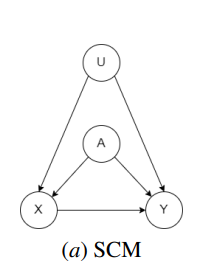In my recent endeavors, I embarked on an intriguing journey of implementation, rooted in the realm of SCM (Symbolic Computation and Manipulation). This journey was inspired by a remarkable article nestled within the domain of machine learning. While my initial aim was to create a machine learning model, I found myself at the genesis of something unique—a venture that led me to delve into the profound depths of Pythagoreanism. The essence of my exploration lay in the synthesis of art and science, where the seemingly abstract concepts of SCM melded seamlessly with the precision of algorithmic logic. As I ventured forth, the algorithms at my disposal transformed into an orchestra of code, producing harmonious melodies of logic. Though the journey did not lead me to the shores of machine learning as I initially anticipated, it was far from futile. At its core, SCM operates on principles akin to those cherished by Pythagoreans—an ancient brotherhood that revered mathematics and its divine harmony. These ancient mathematicians believed that the universe’s very fabric was woven together by the mystical language of numbers. Similarly, SCM embodies the idea of manipulating symbols and expressions to unlock the secrets of computation. This intersection of ideas—between the modern age of computation and the wisdom of antiquity—is where my journey found its resonance. In the realm of SCM, the code becomes a canvas upon which we paint the abstract strokes of mathematical expression. The elegance of SCM lies in its ability to symbolically manipulate these expressions, much like the Pythagoreans symbolically connected numbers to the cosmic order. It’s as if the code becomes a modern-day Pythagorean lyre, resonating with the vibrations of mathematical truths. As I sculpted my SCM-based algorithm, I couldn’t help but ponder the timeless concept of mathematical beauty—the very concept that captivated the Pythagoreans. In their eyes, the harmony of ratios, the perfection of proportions, and the symphony of numbers all contributed to a cosmic aesthetic. My code, though digital and devoid of sound, echoed this aesthetic. The elegance of my symbolic manipulations, the precision of my logical structures, all echoed the same pursuit of beauty. While my journey may not have led me to the machine learning destination I initially sought, it opened up new vistas of exploration. I found myself treading the pathways of algorithmic artistry, where SCM and Pythagoreanism coalesce. In these realms, code isn’t merely a tool but a medium of expression, a bridge between the ancient and the contemporary, and a testament to the enduring power of mathematical thought. In conclusion, my journey into SCM, inspired by a machine learning article, turned out to be a voyage through the annals of mathematical philosophy and artistic expression. It is a reminder that in the vast landscape of computer science, there are hidden treasures waiting to be uncovered. Though my voyage began with machine learning, it found its heart in the harmonious spirit of Pythagoreanism, where numbers, symbols, and logic converge to create something truly transcendent.
(
SynthDef(\SCM_u, {
var freq = Rand(200, 400);
var env = EnvGen.kr(Env.perc, Impulse.kr([1] * 2.5));
var signal = SinOsc.ar(freq, 0, 0.2) * env + SinOsc.ar(freq, 0, 0.2) * env;
Out.ar(out, FreeVerb.ar(signal));
}).add;
)
(
SynthDef(\SCM_a, {
var freq = Rand(4000, 8000);
var env = EnvGen.kr(Env.perc, Impulse.kr([1 + rrand(-0.1, 0.1)] * 2.5));
var signal = SinOsc.ar(freq, 0, 0.2) * env + SinOsc.ar(freq, 0, 0.2) * env;
Out.ar(out, FreeVerb.ar(signal));
}).add;
)
(
SynthDef(\SCM_x, {
var freq = Rand(200, 400);
var env = EnvGen.kr(Env.perc, Impulse.kr([1] * 2.5 * 2.5));
var signal = SinOsc.ar(freq, 0, 0.2) * env + SinOsc.ar(freq, 0, 0.2) * env;
Out.ar(out, FreeVerb.ar(signal));
}).add;
)
(
SynthDef(\SCM_y, {
var freq = Rand(4000, 8000);
var env = EnvGen.kr(Env.perc, Impulse.kr([1 + rrand(-0.1, 0.1)] * 2.5 * 2.5));
var signal = SinOsc.ar(freq, 0, 0.2) * env + SinOsc.ar(freq, 0, 0.2) * env;
Out.ar(out, FreeVerb.ar(signal));
}).add;
)
(
t = Task({
var a, b, c, d, e;
a = Synth(\SCM_u);
b = Synth(\SCM_a);
60.wait; a.free; b.free;
c = Synth(\SCM_x);
d = Synth(\SCM_y);
60.wait; c.free; d.free;
e = Synth(\SCM_y);
60.wait; e.free;
});
t.play;
)
